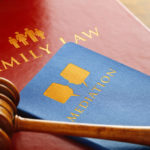Restraining orders are sometimes not fully understood, and in some cases people don’t realize they had this option. A restraining order (also called a “protective order”) is a court order that can protect someone from being physically or sexually abused, threatened, stalked, or harassed. The person getting the restraining order is called the “protected person.” The person the restraining order is against is the “restrained person.” Sometimes, restraining orders include other “protected persons” like family or household members of the protected person.
These are orders to stop specific acts against everyone named in the restraining order as a “protected person.” Some of the things that the restrained person can be ordered to stop are:
-
Contacting, calling, or sending any messages (including e-mail);
-
Attacking, striking, or battering;
-
Stalking;
-
Threatening;
-
Sexually assaulting;
-
Harassing;
-
Destroying personal property; or
-
Disturbing the peace of the protected people.
-
Stay-away orders
These are orders to keep the restrained person a certain distance away (like 50 or 100 yards) from:
-
The protected person or persons;
-
Where the protected person lives;
-
His or her place of work;
-
His or her children’s schools or places of child care;
-
His or her vehicle;
-
Other important places where he or she goes.
-
Residence exclusion (“kick-out” or “move-out”) orders
These are orders telling the restrained person to move out from where the protected person lives and to take only clothing and personal belongings until the court hearing. These orders can only be asked for in domestic violence or elder or dependent adult abuse restraining order cases.
For the person to be restrained, having a restraining order against him or her can have very serious consequences:
-
He or she will not be able to go to certain places or to do certain things.
-
He or she might have to move out of his or her home.
-
It may affect his or her ability to see his or her children.
-
He or she will generally not be able to own a gun. (And he or she will have to turn in or sell any guns they have now and not be able to buy a gun while the restraining order is in effect.)
-
It may affect his or her immigration status if he or she is trying to get a green card or a visa.
-
If the restrained person violates (breaks) the restraining order, he or she may go to jail, or pay a fine, or both.
There are 4 kinds of orders you have access too:
-
Domestic Violence Restraining Order
-
Elder or Dependent Adult Abuse Restraining Order
-
Civil Harassment Restraining Order
-
Workplace Violence restraining order
If you feel you are victim and need help contact the Law Offices of Amy Montes, her experience and know how will guide you in every step and ensure your safety.




